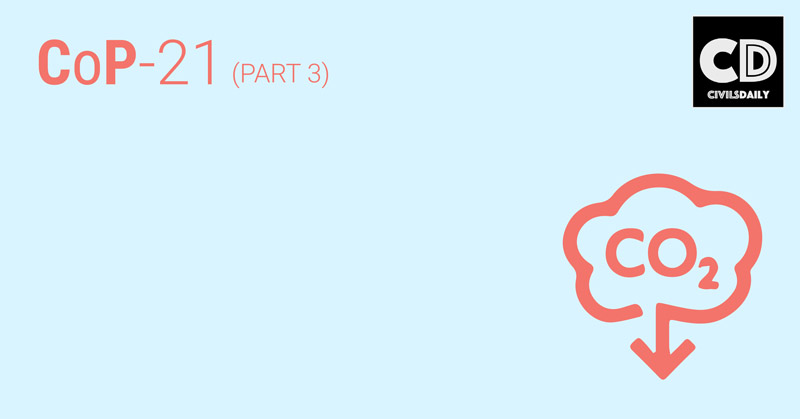This is the 3rd explainer in the series of articles on Paris Climate Talks and the underlying issues.
Previous articles, here: Part 1 & Part 2
In this article, we will explore the newly emerged concept of INDCs, which will shape the Paris climate change negotiations.
What is an INDC?
INDCs, known as Intended Nationally Determined Contributions.
INDCs are bottom-up commitments from nations defining the extent of their emissions reduction contribution towards this global goal.
INDCs showcase a paradigm shift from top-down approach to bottom-up system, in deciding the commitments towards climate change.
Countries have agreed to publicly outline what post-2020 climate actions they intend to take under a new international agreement, known as their INDCs.
Why are INDCs important for climate change?
These INDCs will form the basis for the most awaited Paris Climate Change agreement by the end of this year, which will put in place a new protocol from 2020.
It will largely determine whether the world achieves an ambitious 2015 agreement and is put on a path toward a low-carbon, climate-resilient future.
Ambitious, equitable and transparent INDCs can provide the world a fighting chance to tackle climate change.
How does the process work?
The process for INDCs pairs national policy-setting in which countries determine their contributions in the context of their national priorities, circumstances and capabilities.
It will be accompanied with a global framework where each country drives the collective action towards a low-carbon, climate-resilient future.
INDCs are the primary means for govts to communicate internationally the steps they will take to address climate change in their own countries.
What do India’s INDC look like?
Indian INDCs are inspired by Mahatma Gandhi’s famous quote, “Earth provides enough to satisfy every man’s needs, but not every man’s greed.”
- India has promised to reduce the emissions intensity of its GDP by 33-35% by 2030 from 2005 levels. < The GHG emission intensity means the ratio between a country’s gross emissions to its gross domestic product at a particular point. >
- To increase the share of non-fossil fuel sources in it’s energy portfolio to about 40% by 2030.
- To create an additional carbon sink of 2.5 to 3 billion tonnes of CO2 equivalent through additional forest and tree cover by 2030.
These emission intensity-reduction targets and adaptation to climate change will require about $2.5 trillion
How will India mobilise funds to fulfill its INDC commitment?
INDC data estimates spending of atleast $2.5 trillion between 2015-30 to meets its ambitious INDC target.
India is banking on fiscal measures including fuel subsidy cuts and increased taxes on fossil fuels including diesel and petrol.
The coal cess forms the corpus for the National Clean Environment Fund, which is used for financing clean energy, technologies, and projects related to it.
Published with inputs from Pushpendra


